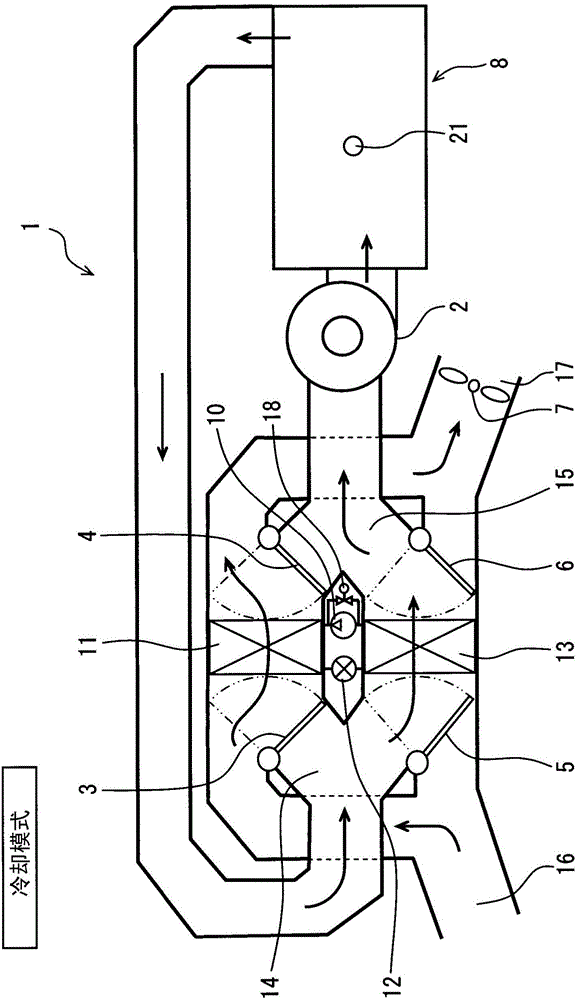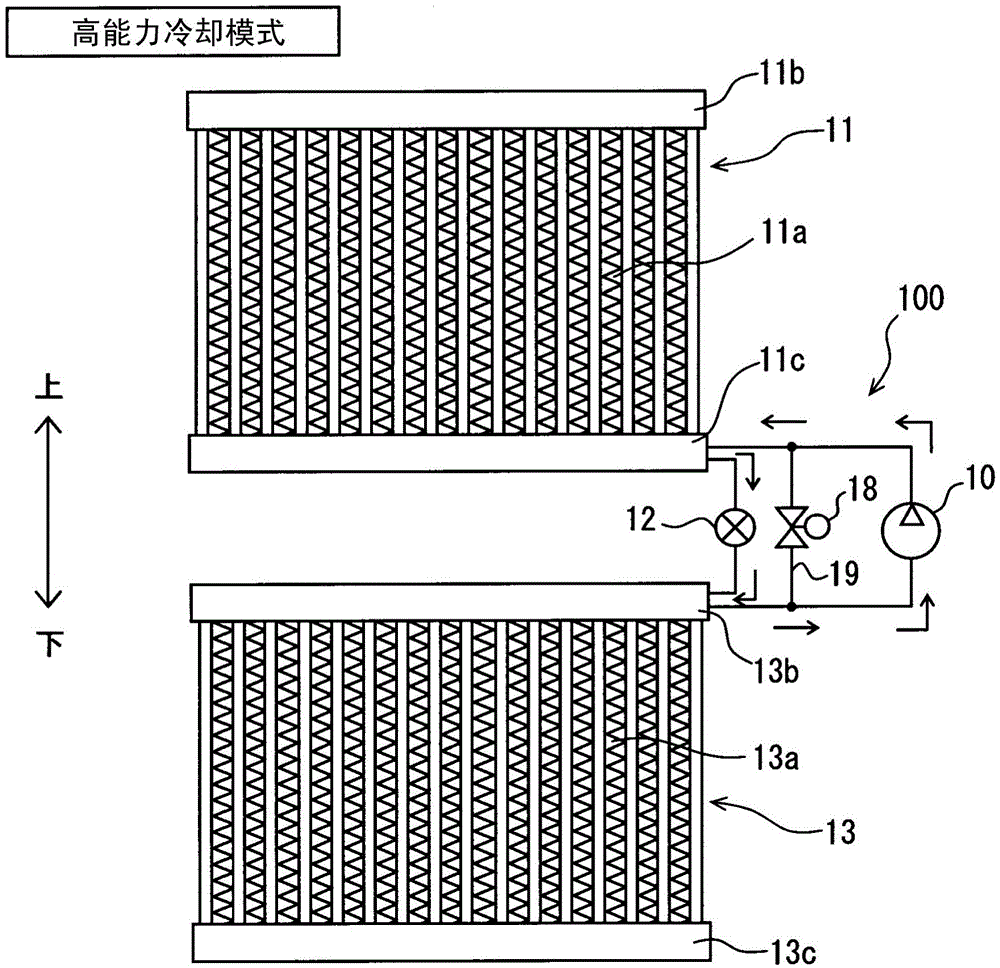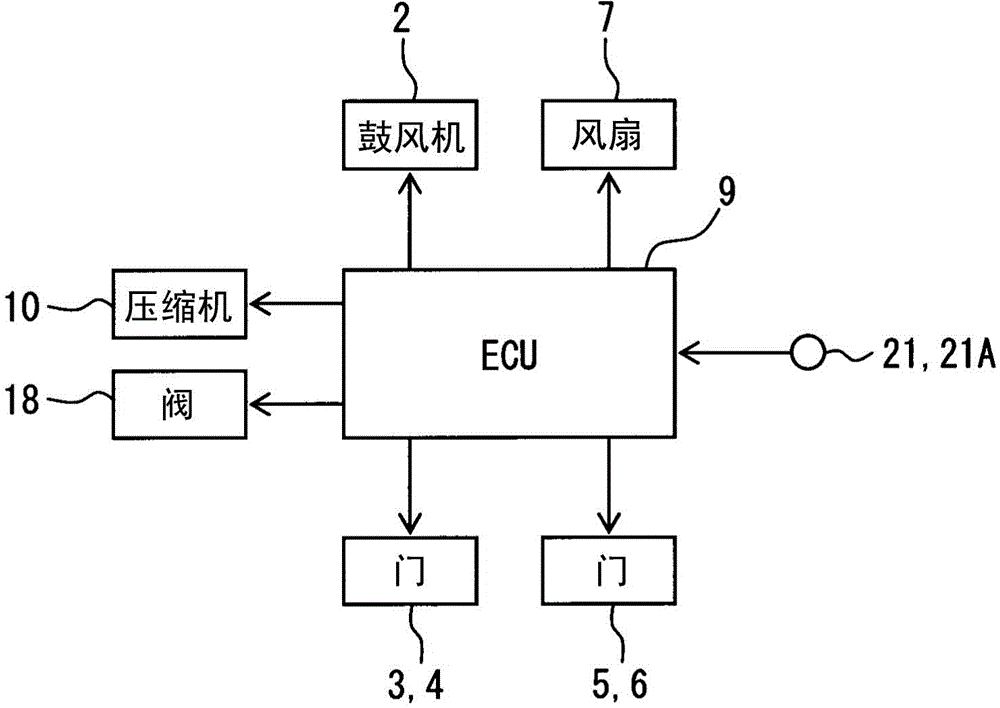Temperature adjustment device
A temperature regulating device and temperature regulating technology, applied in the direction of electrical devices, control devices, battery/fuel cell control devices, etc., can solve the problems of deterioration of oil return to the compressor, noise, insufficient cooling, etc.
- Summary
- Abstract
- Description
- Claims
- Application Information
AI Technical Summary
Problems solved by technology
Method used
Image
Examples
no. 1 approach
[0044] The temperature control device of the present disclosure is used, for example, in a motor vehicle that uses an internal combustion engine as a driving source for running, a hybrid vehicle that uses a motor as a driving source in combination with an internal combustion engine and a motor that is driven by electric power charged to a secondary battery, and that uses a motor as a driving source. Electric vehicles, etc. that drive the drive source. In addition, the temperature-regulated object is a space, equipment, etc. installed in the vehicle and to which the temperature-regulated air can be sent.
[0045] use Figure 1 to Figure 6 , the first embodiment which is one embodiment of the present disclosure will be described. It should be noted that, in figure 1 In , the flow of air when the mode of cooling the temperature-adjusted object requiring temperature adjustment is implemented is indicated by arrows. In the first embodiment, air is used as the temperature control...
no. 2 approach
[0092] In the second embodiment, with respect to the first embodiment, refer to Figure 7 , the refrigeration cycle 100A of another embodiment will be described. exist Figure 7 In , the constituent elements assigned the same reference numerals as those in the drawings referred to in the first embodiment are the same elements, and their functions and effects are also the same. Hereinafter, modes, processing procedures, operations, and the like that are different from those of the first embodiment will be described.
[0093] The refrigeration cycle 100A differs from the refrigeration cycle 100 of the first embodiment in that it does not include the bypass passage 19 and the solenoid valve 18 and that the pressure reducer 12A is an electronically controlled expansion valve with a variable opening. . The opening of the pressure reducer 12A is controlled by the control device 9 .
[0094] In the aforementioned low-capacity cooling mode, the opening of the decompressor 12A is o...
no. 3 approach
[0097] In the third embodiment, refer to Figure 8 , with respect to 1st Embodiment, 1 A of temperature regulation apparatuses of another form are demonstrated. exist Figure 8 In , the constituent elements assigned the same reference numerals as those in the drawings referred to in the first embodiment are the same elements, and their functions and effects are also the same. Hereinafter, modes, processing procedures, operations, and the like that are different from those of the first embodiment will be described. It should be noted, Figure 8 The operation status of each part and the flow of air in the high-capacity cooling mode are shown.
[0098] The temperature regulation device 1A differs from the temperature regulation device 1 of the first embodiment in that an example of the temperature regulation target is the vehicle interior space 30 . Furthermore, the temperature regulating device 1A takes in the air outside the vehicle and the air in the vehicle interior space...
PUM
 Login to View More
Login to View More Abstract
Description
Claims
Application Information
 Login to View More
Login to View More - R&D
- Intellectual Property
- Life Sciences
- Materials
- Tech Scout
- Unparalleled Data Quality
- Higher Quality Content
- 60% Fewer Hallucinations
Browse by: Latest US Patents, China's latest patents, Technical Efficacy Thesaurus, Application Domain, Technology Topic, Popular Technical Reports.
© 2025 PatSnap. All rights reserved.Legal|Privacy policy|Modern Slavery Act Transparency Statement|Sitemap|About US| Contact US: help@patsnap.com



